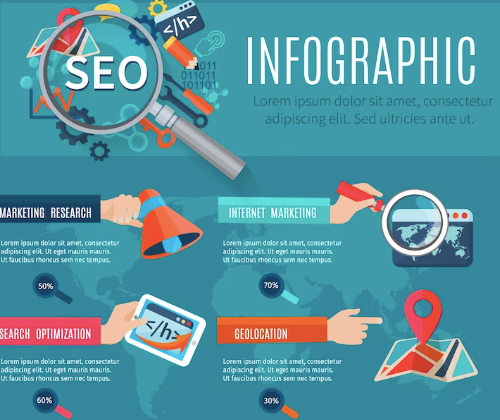Infographics are powerful visual assets that can effectively convey complex information in a visually appealing manner. They are not only popular among users but also highly shareable, making them valuable for SEO. However, to fully leverage the SEO potential of infographics, proper optimization is essential. In this guide, we will explore how to optimize your infographics for search engines to increase their visibility and drive organic traffic to your website.
Choose Relevant and Engaging Topics
The foundation of a successful infographic lies in selecting topics that resonate with your target audience. Conduct thorough keyword research to identify trending topics related to your niche. By addressing subjects that users are actively searching for, you increase the chances of your infographic gaining traction and attracting backlinks.
Create High-Quality Visuals
Compelling visuals are at the core of every successful infographic. Ensure that your design is aesthetically pleasing, easy to understand, and aligned with your brand’s style. Use high-resolution images, charts, and graphs to enhance the visual appeal and convey information effectively.
Optimize Image File Names – Use Alt Text
Alt text is essential for accessibility, and plays an essential role in SEO. Write descriptive alt text for your infographic, including relevant keywords where appropriate. This helps search engines understand the content of the image and can lead to better rankings in image search results. When saving your infographic, use descriptive file names that include relevant keywords.
Craft a Keyword-Rich Title and Meta Description
The title of your infographic should be engaging, concise, and keyword-rich. Incorporate your primary keyword naturally into the title to improve its relevance and SEO performance. Also, include a well-written and keyword-optimized meta description. This description provides context to search engines about the infographic’s content and improves its discoverability.
Read: Key On-Page SEO Factors You Need To Implement Right Now
Embed Infographics in Blog Posts
To enhance the SEO value of your infographics, consider embedding them within relevant blog posts. This practice not only provides additional context for users but also signals to search engines the relationship between the content and the infographic.
Also, make sharing of your infographics easy by including social media sharing buttons. When users share your infographics on various platforms, it can lead to increased visibility and potentially attract more backlinks.
Outreach and Link Building
Reach out to relevant websites, blogs, and influencers in your niche and share your infographic with them. Building high-quality backlinks from reputable sources can significantly boost the SEO value of your infographic.
Conclusion
Infographic SEO is a valuable strategy for driving organic traffic and improving the visibility of your brand. By optimizing your infographics with relevant keywords, high-quality visuals, and proper metadata, you can increase their chances of ranking higher in search engine results. Additionally, promoting social sharing and building backlinks will enhance the reach and impact of your infographics, making them a powerful asset in your overall SEO and content marketing efforts.

